The Seamless Sailor
Self-reliant sewing for sailors.


Lee Cloths – Getting a Good Night’s Sleep
Lee cloths seem like an easy project…a rectangle and some grommets right? But wait, how will the lee cloth really work to provide a restful spot during an overnight voyage? Will it be strong enough and positioned to hold the person off watch as desired? This blog post will give ideas on what to consider when planning an off watch sleeping berth and construction ideas.
Magnolia inherited a set of very nice canvas lee cloths. The corners have webbing reinforcements to strengthen them as well as heavy rings as attachment points. There is webbing on each side edge and down the middle for some stability. While I didn’t make these, we had to reinstall the starboard settee one after the removal of a fuel tank located under the starboard settee. The starboard lee cloth is attached in place with screws through small grommets to the base of the settee/the wood cover over the tank. It is stored right under the settee cushion with lines ready to go.

The port side lee cloth is removable with snaps to get to the storage cubbies underneath. It is stored in a large zipper top bag with a dryer sheet in a cubbie behind the settee back.

There are some primary considerations in your planning and design stage. How will you attach the lee cloth? Velcro? Snaps? Screws? Bolt rope track? To what will you attach the line or webbing to hold it up? Pad eyes? Overhead hand holds? Take a look at any possible existing attachment points. If you don’t have any, what and where can you add them? What fabric will you use? Canvas? Phifertex mesh? Sail cloth? Where do you want to attach the line and through what – rings or webbing? What size covering works for comfort and getting in and out? Do you want a pocket for eyeglasses or a red lens flashlight, and if so, on the inside or outside?
To hold up the top of the lee cloth, we use pad eye rings installed above the settee. I’ve set up line on each lee cloth with clips or carabiners so that they are set to use. When you are tired and getting off watch, just clip the lines to the pad eyes and climb in.

Here are several articles, books, and blogs that show how to make lee cloths:
Good Old Boat – November/December 2013 Recommends a small quick release tackle at one end to make it easier to adjust the top lines or get in and out.
Canvas for Cruisers – Julie Gifford’s book gives good, practical construction steps.
Morgan’s Cloud – http://www.morganscloud.com/2011/03/20/the-perfect-seaberth-2/ What goes into a good sea berth?
Cat’s Paw IV – http://annoeboat.blogspot.com/2006/05/lee-cloths.html They used sail cloth.
Wind Traveler – http://www.windtraveler.net/2013/05/snug-as-bug-in-alee-cloth.html. Brittany tackles a lee cloth and adds a pocket for miscellaneous items.
Stella Blue – http://www.wbryant.com/StellaBoat/Projects/canvas/leecloths/ She adds zippers to aid getting in and out.
Adagio – http://www.home.earthlink.net/~sv-adagio/AboutAdagio.html Check out this different design shape for a lee cloth.
Tenaya – http://www.tenayatravels.com/Equipment%20Comments%202.html Clever idea to make a lee cloth for the v berth to add more space and comfort.
Honey Rider – http://wildcatsailorgirl.blogspot.com/2010_04_01_archive.html Lee cloth made of mesh with a detachable eye-glass holder.
Cantare – http://sailingcantare.blogspot.com/2009_02_01_archive.html Interesting and unique mounting system.
Rebel Heart – http://rebelheart.squarespace.com/charlottes-blog/2011/4/7/baby-proofing-the-boat-custom-lee-cloth-part-one.html Charlotte makes a lee cloth for the baby.
Other ideas for lee cloths? Leave a comment.
See more pictures on the Pinterest board for Lee Cloths
Share this:
2 thoughts on “ lee cloths – getting a good night’s sleep ”.
Fascinating there seem to be as many approaches to lee cloths as there are boats! Thanks for the ideas. Our latest saloon one is different again – attached underneath the cushions using lines tied to three eyelets in the leecloth and to corresponding padeyes fixed on the wood (one at each corner and one in the middle. This enables us to move it easily for access to the lockers underneath the bunk. The other side is only fastened at either end via a line running through the length of the “top” hem through pad eyes situated behind the top of the cushions quite wide apart then tied back to eyelets in the canvas as the saloon seating is curved. Yet to be tested in heavy weather it seems quite comfy. In our aft cabin the lee cloth is actually a lee board of solid teak running the full length of the bunk. Known as the “passion killer” the board enables 2 people sleep in comfort beating to windward without landing on top of each other! One final idea from another boat I used to sail on – some bench sofas have a fiddle on the outer edge to stop the cushion sliding off which is jolly uncomfortable if you end up lying on it in the lee cloth – simply take the back cushion or deck cushions and slot them in along the lee cloth to avoid the pain.
Thanks for the additional ideas!
Leave a Reply Cancel reply
Country/region
- CAD $ | Canada
- GBP £ | United Kingdom
- USD $ | United States

Item added to your cart
Welcome to our store
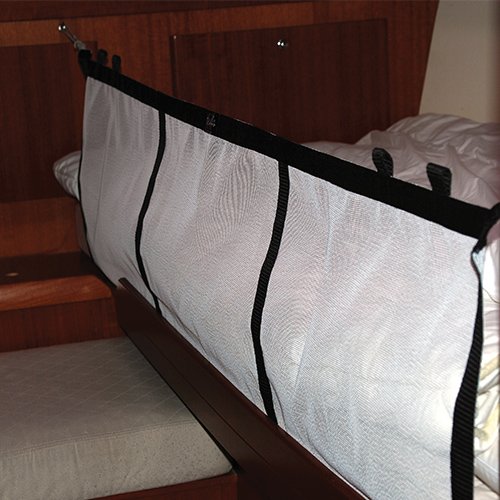
Outils Oceans - Lee Cloth For Roll Out Of Bed Safety - Bunk Net
Couldn't load pickup availability
'Lee Cloth' or Bunk Net, for anti roll protection on your boat, sailboat, fishing boat or Yacht. A "MUST HAVE" for racers!
Discover Ultimate Sleep Comfort and Safety with Indie Marines' Premium Lee Cloth. Our meticulously crafted Lee Cloth, also known as a Bunk Net, offers unparalleled roll-prevention for your sailboat or yacht bedding. Engineered with reinforced edges and vertical supports, it ensures a secure sleeping environment even in choppy waters. Adjustable length options of 170 / 145 / 120 cm, along with easy-to-attach loops and a flap for under-bunk fastening, guarantee a hassle-free experience. Crafted from high-quality materials including PVC coated polyester mesh and polypropylene webbing, our Lee Cloth promises durability and longevity.
Elevate your boating adventures with this essential accessory, ideal for both seasoned sailors and enthusiastic racers. Prioritize safety without compromising on comfort.
- Reinforced around the perimeter and 2 vertical reinforcements for your bunk
- Loops for adjusting the length to 170 / 145 / 120 cm for the boating sleeping net
- Loops for attaching the base to the berth net
- Flap to be placed under the bunk and fastened with screws (not supplied)
- PVC coated polyester mesh (White),
- Flap PVC coated polyester 2 sides (White), 8cm
- Reinforcements polypropylene webbing (Black)
Please Note : If we run out of this product you can still order. Any orders beyond our current available stock will take an additional 4-6 weeks or potentially we have one on the way. If you have any questions regarding order status please reach out to our team at [email protected]
- Choosing a selection results in a full page refresh.
- Opens in a new window.
- New Sailboats
- Sailboats 21-30ft
- Sailboats 31-35ft
- Sailboats 36-40ft
- Sailboats Over 40ft
- Sailboats Under 21feet
- used_sailboats
- Apps and Computer Programs
- Communications
- Fishfinders
- Handheld Electronics
- Plotters MFDS Rradar
- Wind, Speed & Depth Instruments
- Anchoring Mooring
- Running Rigging
- Sails Canvas
- Standing Rigging
- Diesel Engines
- Off Grid Energy
- Cleaning Waxing
- DIY Projects
- Repair, Tools & Materials
- Spare Parts
- Tools & Gadgets
- Cabin Comfort
- Ventilation
- Footwear Apparel
- Foul Weather Gear
- Mailport & PS Advisor
- Inside Practical Sailor Blog
- Activate My Web Access
- Reset Password
- Customer Service

- Free Newsletter

Aluminum Cruisers: The Basics for First-Time Buyers

Marshall Sanderling 18: Used Boat Review
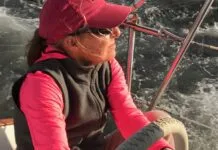
Affordable Cruising Sailboats, Continued

Maine Cat 41 Used Boat Review

Tillerpilot Tips and Safety Cautions

Best Crimpers and Strippers for Fixing Marine Electrical Connectors

Thinking Through a Solar Power Installation

How Does the Gulf Stream Influence our Weather?
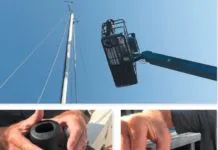
Need a New Headsail Furler? Here’s What’s Involved

Master the Sailing Basics: Never Stop Learning the Little Things
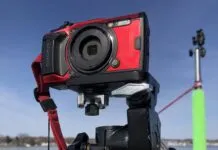
How to Mount Your Camera on Deck: Record Your Adventures with…

Un-Stepping the Mast for America’s Great Loop

Ensuring Safe Shorepower

Sinking? Check Your Stuffing Box

The Rain Catcher’s Guide

How to Change Your Engine Mounts

Vinyl Boat Lettering DIY Application and Repair

Those Extras you Don’t Need But Love to Have

Three-Model BBQ Test
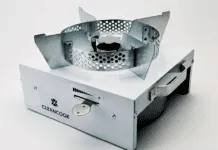
Alcohol Stoves— Swan Song or Rebirth?

UV Clothing: Is It Worth the Hype?

Preparing Yourself for Solo Sailing

How to Select Crew for a Passage or Delivery

Preparing A Boat to Sail Solo

Dear Readers

Chafe Protection for Dock Lines

Waxing and Polishing Your Boat

Reducing Engine Room Noise

Tricks and Tips to Forming Do-it-yourself Rigging Terminals
- Safety & Seamanship
Seaberths Examined
The design of offshore production-built sailboats often overlooks a crucial element in crew comfort and safety—the seaberth. so what qualifies as a proper seaberth.

Whether you’re crossing the Gulf Stream to Bermuda or the Bahamas, racing to Halifax or Hawaii, or just cruising coastal waters, having proper sea-berths for the off-watch crew is an often neglected, yet vitally important element of a good offshore boat. Why are good seaberths a shipboard necessity? Anytime a vessel is underway for more than a few hours, a rested skipper and crew are essential for the safe operation of the boat.
Even in this day of sophisticated electronic navigation, boats are occasionally lost while entering an unfamiliar port at night or in foul weather. Often a major factor contributing to dire mishaps like these is the lack of seaberths on board, which can lead to an exhausted and mistake-prone crew that’s yearning to get ashore as soon as possible. A well-designed seaberth not only ensures comfort for its occupant during time afloat, but also provides the security necessary to minimize the possibility of injury from being launched across the cabin in the case of a knockdown, broach, or other drastic change in course.
We are beyond the age of Lord Nelson’s navy when hundreds of sailors aboard a man-of-war slept in hammocks slung a regulation 18″ apart. For generations of sailors, hammocks were the seaberth of choice. These simple devices maximized space, stayed comfortably level as Jack Tar gently swung to the roll of the ship, were easy to enter and exit, and did double duty when stacked as protection against incoming cannon balls.
These days, unless you’re single or double-handing, in which case one seaberth may be sufficient, half the number of crew, plus one, is the minimum number of proper seaberths PS recommends.
An extra seaberth allows non-watchstanding guests or seasick crew to be comfortable, yet out of harm’s way while the boat is being worked. If unoccupied, an extra seaberth provides secure stowage for duffles, laptops, or other sensitive items. To prevent frustration and seasickness, sea-berths should be assigned, located, and prepared in advance of setting sail, especially at night or during heavy weather when a tired crew just wants to undress and fall into a welcoming bunk, rather than face the chore of emptying and making up the berth.
What makes a proper seaberth? Despite a broker’s alluring words or a glossy advertisement featuring flowers and hors d’oeuvres in a seductive interior, a seaberth is not just a salty name for a bunk cushion secured by fiddles. Location, dimensions, and detailing all are important elements as a functional seaberth is more than the sum of its parts. Size, shape, lighting, ventilation, noise, cushions, ease of access, lee cloth/bunkboard functionality, view of navigational instruments, even the quantity of pillows are the more important considerations when designing and fitting a seaberth.
Location, Location, Location The best location for seaberths can be a lively topic of discussion. Generally, a good seaberth is situated aft of the mast, where the pitching motion is least. Although a forward cabin may occasionally be an excellent place to sleep, particularly while motoring in flat water or sailing downwind in consistent breezes, a forward cabin is not a good location for a seaberth due to the increased motion underway, the noise of waves drumming against the flat panels of the bow, the triangular shape of the V-berth, and the difficulty of providing leak-free ventilation.
Because the motion of a boat is less appreciable lower in the hull, a good cruising seaberth is best located lower, rather than higher in the interior. Although rarely acceptable on a racing boat, sleeping on the leeward side provides an excellent compromise of reduced pitch, roll, and noise, as a leeward bunk is low in the boat and gravity becomes an ally to assist in keeping one securely in the bunk.
Additionally, the lullaby of water swishing along the lee rail can sooth one to sleep. In an emergency, a comfortable temporary seaberth can often be improvised by laying a bunk cushion on the cabin sole (the lowest habitable location on most boats,) and using sail bags and duffles as cushioning.
Ideally, a seaberth should be located parallel to the centerline of the boat. If not, as the boat heels, the bunk’s lengthwise axis will change from horizontal. In such a case, the more the boat heels, the less effective the bunk becomes, as sleeping with your feet higher than your head, (or vice versa), may cause vertigo or other unpleasant effects. Even a few inches of bunk asymmetry relative to the centerline can make a big difference. This rules out the use of athwartships (crosswise) berths as a seaberth while underway.
A proper seaberth is at least 76″ in length, 22″ to 28″ wide along its entire length, and a minimum of 24″ from the top of the bunk cushion to the overhead. Seaberths of these approximate dimensions provide a snug fit for security, yet allow enough volume for pillows, blankets, clothing, and the taller or wider-bodied crewmember. Any narrower or shallower, and the seaberth begins to assume the ambiance of a coffin with the comfort of a torpedo tube. Any wider, and the occupant can roll uncomfortably from side to side as the boat rolls, pitches, or yaws. Extra wide or double berths can effectively be converted into two seaberths using lee cloths and/or removable bunk boards.
Except for the proximity to the engine room, the time tested aft “quarter berth,” as found on a Cal 40 and many other mature designs, is often the quintessential seaberth. Even more modern designs such as the Catalina 42 can benefit from retrofitted seaberths.

Another excellent seaberth is a main cabin settee. With a large number of crew, settees sometimes suffer from traffic and disruption due to cabin lights, galley and nav station noise, and sunlight from the cabin ports and hatches. But with the use of lee cloths, window and hatch curtains, eye shades, and foam ear plugs, most such disruption can be minimized for those sailors using a settee as a seaberth.
The easiest to install, and perhaps the most comfortable seaberth is the pipe berth. Pipe berths have been around for generations, and remain the seaberth of choice on race boats where windward side crew weight is paramount.
Pipe berths are usually rectangular aluminum or carbon fiber tubular frames that are hinged to the hull, and are lightweight, strong, and can be racked two, or even three high. Even a frame constructed of PVC plumbing pipe, or a hinged plywood board with a cushion can make an inexpensive yet comfortable pipe berth.
Pipe berths offer the advantage of being easily retrofitted in many areas aboard even the smallest boats. Lowered to a near vertical position, a pipe berth can also double as a back rest for a lower bunk or settee. Surprisingly, the biggest advantage of pipe berths is their comfort, as they can be lowered for access, then leveled for sleeping using the 4:1 purchase system.
Another excellent seaberth is the pilot berth, located above and outboard of settees on some boats. In fact, the best seaberth on a boat like the Santa Cruz 50 or 52 is the main cabin pilot berth, as it is out of the way of traffic and noise.
But on many designs, the pilot berth is not an option, as this space is dedicated to book shelves, entertainment consoles, and even water ballasting tanks. Unless well designed and constructed early on, pilot berths are often too narrow, uncomfortably shaped, or compromised by the boat’s frames, stringers, chain plates, or other hull structures.
For shorthanded sailing, a “wet berth” is a vital asset to boathandling and safety. A wet berth is a secure rest area protected from inclement weather where the skipper or watch stander can rest (often in foulies), immediately available to lookout, steer, trim, or perform other boat handling responsibilities. A wet berth might be a cushion placed on the floor of the cockpit, in the lee of a dodger, or below in a pilot house where the navigation instruments are readily visible. Ideally, a wet berth is below out of the elements, adjacent to the companionway, with a good view of the compass, radar, depth sounder, and chart plotter, and with the autopilot and auxiliary engine controls also readily at hand.
Lee Cloths Every good seaberth will benefit from fine-tuning to provide comfort. Except for pipe berths, a rectangular lee cloth is the primary means of securing an occupant in a seaberth. Although a satisfactory lee cloth can be made from old sail cloth, the best lee cloths are sewn using breathable acrylic canvas such as Sunbrella™.
Where possible, lee cloths should extend along the full length of the bunk and be secured in a vertical plane, or angled slightly inward toward the sleeper. Unfortunately, commercially available lee cloths, such as those available at West Marine, are too short (45″) to restrain both head and feet from hanging out of the seaberth. In addition, many commercially available lee cloths are made of less than substantial vinyl plastic mesh, which may give an unpleasant feeling to bare skin and rip at inopportune moments. Consequently, most good lee cloths are custom-made.
As noted, a lee cloth should be as long as possible, and rise at least 12″ above the top of the bunk cushion. The bottom edge of the lee cloth can be secured with either a batten and screws, or through bolted at 6″ centers to the bunk top. An even better method of securing a lee cloth is a bolt rope that is sewn to the bottom edge of the cloth and then inserted in a bolt-rope track, (plastic or aluminum, available from most canvas makers), which is screwed to the bunk top. This allows for easy removal of the lee cloth for washing.
If the bunk cushion is double wide and lee cloth placement is difficult, bunk boards can also be used in lieu of lee cloths. In the situation where neither a bunk board nor a lee cloth is an option, a low-stretch line can be inserted and sewn along the bottom edge of the lee cloth, and tautly secured to points at the head and foot of the bunk cushion, so that the bottom of the lee cloth rests along the top of the bunk cushion. When not in use, lee cloths can be laid flat and tucked out of the way under the bunk cushion.
Lee cloths are often subjected to considerable abuse and side force, so the top edge and corners of the lee cloth need reinforcing. The grommets on the upper corners should be laced taut with 1/4″ line on an upward-sloping 45-degree angle to securely anchored padeyes or the equivalent. And the two mid grommets need to be tensioned vertically to overhead padeyes. Even better, they can be run over an overhead handrail. The handrail will also assist the berth occupant in recovering from the horizontal position.
Tensioning lee cloth lines is usually a haphazard affair. The best adjustable knot is the rolling hitch, which can be slid along the support line to achieve proper tension. A better solution is a friction plate that can be fashioned from a simple 2″ x 4″ x 3/16″ rectangle of wood, or a dowel, with two holes drilled into it that provide an easily adjusted purchase.
Seaberth Accessories Next to location and lee cloths, ventilation is the most important consideration for a good seaberth. Unfortunately, ventilation from nearby opening ports often admits water as well as air. An excellent alternative is the use of an electric fan. PS recommends that sea berths be ventilated with a fan mounted at the head of the bunk where possible. Such a fan should be quiet, adjustable, miserly on power consumption, and produce no radio interference.

Lighting for a seaberth is available in many options. One good option that helps maintain night vision is the use of a red-white combination light. Even having a battery powered headlamp available in each seaberth is sufficient.
Another aid for a good seaberth is the use of foam earplugs. While they may not be for everyone, they can dampen annoying sounds and muffle engine and radio noise to an acceptable level. Of course a skipper or navigator must always sleep with one ear open, and leading a “signal line” from the seaberth to the helm can facilitate this awareness. This is particularly useful when sailing shorthanded, or with inexperienced crew.
As experienced distance racers know, when possible, crew should sleep in seaberths with their feet forward. This practice lessens the chance of head or neck injury in the event of unanticipated rapid deceleration, as in the case of a collision with a whale, or when being tossed about by larger than average waves. If venturing into areas of potentially rugged upwind conditions such as the Baja Bash, crossing Hawaiian Island channels, or the Windward Passage, it is also recommended to consider installing seat belts across each seaberth as a measure to prevent airborne crew.
Such a measure would have been appreciated earlier this winter when a crewmember aboard one of the boats competing in the Global Challenge suffered a dislocated hip and bone fragmentation after he was thrown from his berth when the boat became airborne following a hit by a particularly large wave while en route from Australia to South Africa.
Safety is paramount in this event, and the 72-foot vessels competing have purposely designed seaberths for all off-watch crew. Granted, relatively few of us will ever voyage through this patch of ocean aboard our boats, but the point is clear—offshore and ocean sailing vessels should have good, properly equipped seaberths. And given the growing popularity of cruiser-friendly rallies and races—the ARC, the Caribbean 1500, the Newport-Ensenada Race, and the Baja Ha-ha among them—having a sufficient number of properly equipped seaberths on board shouldn’t be regarded as optional.
Also With This Article “Where are the Seaberths?”
RELATED ARTICLES MORE FROM AUTHOR

Electric Winch and Windlass Safety
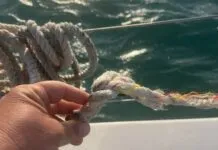
Severed Anchor in the Bahamas: Seven Lessons Learned
Really REALLY good article; and I am relieved as well as amused to discover that the saloon berths in my own little cruising boat fit all of Darrell’s specifications to a tee. Thanks for the enlightenment and confirmation!
LEAVE A REPLY Cancel reply
Log in to leave a comment
Latest Videos

The Cheap Big Cruising Sailboat – Endeavour 42


Marine VHF Radio – What You Need to Know

Pearson 37 & 37-2 – Behind the Curtain

How To Test a Boat Engine
Latest sailboat review.
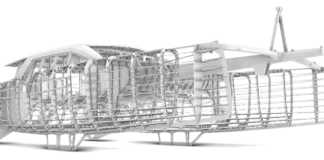
- Privacy Policy
- Do Not Sell My Personal Information
- Online Account Activation
- Privacy Manager
Sail My Boat
Everything to better the experience of sailing on your boat. welcome to the club..

Crew underway need to wake up where they laid down, sounds reasonable right? Too often berths on boats are wide, or on the high side, or as is a recent trend are large beds with half open sides. Twenty-two inch wide bunks with a board of wood along the side just aren’t popular.
Even a double bed in the boat needs to be divided. It might appear cozy to share however on a sloping bed gravity will soon have one person being crushed. Ideally the mattress will be split in two and cloth divider can be erected to divide the space.
A handy tip it so have pockets sewn into the lee cloth, then a favourite magazine or book can be nearby. This Sailrite video shows a good example, wrt their example, I like to see the securing points much stronger. I’ve slept in conditions where the boat was occasionally pinned over while hove to, and that is not the time for a cloth to break on you.
When making your own, the two weak points are attaching the bottom and top. I’ve lots count how many lee cloths on boats I delivered were inadequate for real passages, enough so that I often slept on the sole to avoid breaking the lee cloth. My preferred way for attaching the bottom, is to slide in a 3/4 piece of aluminum into the hem and fasten through that several pan head screws with washers, or even bolt it through the wood if acceptable.
To save fabric people often make the lee cloth 4 or so feet long, I feel they should be full length of the bunk, or at least full length from the head to the shins of an adult, it really is very annoying to have your pillow fall down half way through sleeping.
Share this:
Categories: Safety , Sewing
Leave a comment Cancel reply
Blogs/articles/projects.

- Already have a WordPress.com account? Log in now.
- Subscribe Subscribed
- Copy shortlink
- Report this content
- View post in Reader
- Manage subscriptions
- Collapse this bar
Marriage Saver Headsets
Item added to your cart

Outils Ocean
Lee Cloth For Roll Out Of Bed Safety
Couldn't load pickup availability
'Lee Cloth' for anti roll protection on your boat, sailboat, fishing boat or Yacht. A "MUST HAVE" for racers!
- Reinforced around the perimeter and 2 vertical reinforcements
- Loops for adjusting the length to 170 / 145 / 120 cm OR 66.92 / 57 / 47.2 inches
- Loops for attaching the base
- Flap to be placed under the bunk and fastened with screws (not supplied)
- PVC coated polyester mesh (White),
- Flap PVC coated polyester 2 sides (White), 8cm
- Reinforcements polypropylene webbing (Black)
Please Note : If we run out of this product you can still order. Any orders beyond our current available stock will take an additional 4-6 weeks or we can transfer stock from our other warehouse. There is always the potential we have several on the way too. If you have any questions regarding order status please reach out to our team at [email protected].
- Choosing a selection results in a full page refresh.
- Opens in a new window.
World Renowned Reputation - The UK's Premier Boat Cover Maker

WORLD RENOWNED REPUTATION THE UK’S PREMIER BOAT COVER MAKER

Standard Lee Cloths are manufactured in Sunbrella Plus ‘Dune’, which is a beige, but there are other colours to choose from. Head to our Sunbrella Plus Colour Chart to assess other options and speak to us about your preferences. We’ll do all we can to accommodate each and every customer and produce your personalised Lee Cloths.
Self-fitted or Tecsew Fitted Lee Cloths
With an integral 6mm braided line sewn into a pocket at the top and base and a flap that tucks in under the cushion, our Lee Cloths are available on a self-fit basis and can be supplied with or without pad eye fixings. However, if you would prefer us to fit and are local, please enquire using the form below or contact us for more details.
Call us for enquiries on 02392 556548. Our friendly staff will gladly assist you.
Have a question? We are happy to help!
02392 556 548
Tecsew Ltd, Unit E3 Eagle Building Daedalus Park, Daedalus Drive Lee-on-the-Solent, Hants, PO13 9FX
- Name * First Last
- Yacht/Powerboat Type *
- Your Boat Image Accepted file types: jpg, png, jpeg, Max. file size: 32 MB.
- Ask a question *
- Phone This field is for validation purposes and should be left unchanged.
Sailing AUKLET
~ small sailboat cruising and related thoughts.

19 Thursday Sep 2013
Posted by shemaya in the boat
≈ Leave a comment

This project made it onto the list because of my interest in doing overnight passages, but it has been useful for so much more! First a description: this one is made out of Phifertek, a woven mesh, vinyl coated fabric that I got from Sailrite (just like always, I’m not getting anything for mentioning these names, and my only relationship with them is being a customer). This stuff is really strong, not prone to mold, and allows for ventilation if the weather is hot. It’s the same material that those blue mesh organizer bags are made out of, that come from the boat catalogs. It’s smelly when it’s new, but after it has sat around for a while it’s just fine.
Suzanne and I got out the sewing machine, and between the two of us put this together. It has a double folded hem along the bottom edge for fastening to the wooden surface of the berth, which we later attached using wood screws and trim washers, spaced about 5 inches apart. The vertical edges on each end of the leecloth are covered with strips of sunbrella bias tape (that’s what those folded strips are called – they’re actually not tape with stickum, but something you sew on). This was easier and less bulky than folding and sewing hems, and works just as well for dealing with the scratchy edge of the Phifertek, as well as adding a little bit of strength, and preventing stretching at the edges. Bias tape is also more flexible than folded hems would have been, which has turned out to be really nice when it comes to folding the leecloth away when not in use.
The top edge of the leecloth was folded over once for a hem, folded again with a deep fold to double the thickness in the top 6 inches of the fabric, and stitched. After this is when the bias tape went onto the vertical edges of the whole piece. Then the top edge was folded and stitched yet again, with two rows of zigzag stitching, to form a long, open-ended pocket that is two layers thick. The two layers of the pocket are for added strength, and the bias tape keeps things from being scratchy and ensures that the line that holds the whole business when in use doesn’t get put through the wrong layer of the pocket.
On the boat, we through-bolted one of those hefty, oblong, two-fastener bronze pad eyes up forward and attached a sturdy line with a carabiner. That line runs through the pocket on the top edge of the leecloth, with a good bit of extra tail. In use, the leecloth is unrolled and stretched taut with that line, and the line is tied off on the vertical pole near the head end of my berth. One could just as well use another pad eye, but the pole that we put in for a handhold and for shoulder-bracing when lying down turned out to be perfect in this particular situation. A couple of turns around the pole and then two half hitches, with the second one slipped, makes a sturdy connection that’s still easy to get out of quickly.
Originally, I did indeed use this setup for overnights at sea. It was quite good just as it was for preventing a fall, and then it finally occurred to me to put a firm, fiberfill pillow (which I fortunately happened to have on the boat) at my hips, against the leecloth, and the whole thing got really, really comfortable. At sea on a port tack, which means one is resting against the leecloth, it works like a hammock, feeling quite sturdy and reliable.
A while after that initial use, I was anchored somewhere with a good bit of rolling – I can’t remember if it was from regular waves or boat wakes – and when it was time to go to sleep I thought of putting up the leecloth, just for extra insurance. What a treat! It’s amazing how much better I slept knowing that I didn’t have to stay alert for an extra big wave. It has now become routine that if there are any kind of waves at anchor, when it’s time to sleep up goes the leecloth.
These days fall is coming along, and occasionally the nights have been pretty chilly – 40° outside, and down to about 50 inside the boat by just before dawn. One of those chillier nights coincided with waves and the leecloth, and I was surprised to find how much warmer I was. I have a variety of strategies for keeping warm, which I’ll write about separately, but it was a treat to find that just using the leecloth, with that big pillow alongside, significantly improved things. For one thing, the down sleeping bag that I use more like a comforter on top of everything else doesn’t fall off the berth! And assorted covers are held more snugly. It’s made a noticeable difference, and other things that I do to keep warm have not been as necessary.
As a further bonus, with a little stray fleece clothing added alongside the bottom of the leecloth for padding, my berth is just enough wider to completely support both shoulders and arms without fussing to get into the exact perfect spot. Heavenly. At this rate, I’m going to start sleeping with the leecloth even when it’s flat calm!
Leave a Reply Cancel reply
Discover more from sailing auklet.
Subscribe now to keep reading and get access to the full archive.
Type your email…
Continue reading
Visit our Popular Forums
- Monohull Sailboats
- Multihull Sailboats
- Powered Boats
- General Sailing
- Antares Yachts
- Fountaine Pajot
- Lagoon Catamarans
Cruising Business
- Boat Classifieds
- General Classifieds
- Crew Positions
- Commercial Posts
- Vendor Spotlight
Life Aboard a Boat
- Provisioning: Food & Drink
- Families, Kids, & Pets Afloat
- Recreation, Entertainment, & Fun
- Boat Ownership & Making a Living
- Liveaboard's Forum
Seamanship, Navigation & Boat Handling
- Seamanship & Boat Handling
- Training, Licensing, & Certification
- Health, Safety, & Related Gear
- Rules of the Road, Regulations, & Red Tape
Engineering & Systems
- Const. / Maint. / Refit
- Product / Service Reviews
- Electronics: Comms / AV
- Electrical: Batts / Gen / Solar
- Lithium Power Systems
- Engines & Propulsion
- Propellers & Drive Systems
- Plumbing / Fixtures
- Deck Hdw: Rigging / Sails
- Aux. Equipment & Dinghy
- Anchoring & Mooring
Photo Categories
- Member Galleries
- Life Onboard
- Sailing in the Wind
- Power Boats
- Cruising Destinations
- Maint. & Boat Building
- Marine Life
- Scuba Diving & Divers
- General Photos
Recent Photos

Listing Categories
- African Cats
- view more »
- Crew Wanted
- Crew Available
- Enhance Your Account
- Meet the Mods
- Meet the Advisors
- Signup for The Daily Cruiser Email

| |||||||||||||||||||||||||||||||||||||||||||||||||||||||||||||||||||||||||||||||||||||||||||||||||||||||||||||||||||||||||||||||||||







IMAGES
VIDEO
COMMENTS
Boat: Jeanneau SO 45.2. Posts: 77. Making Lee Cloths. I am preparing to make some lee cloths for a transAtlantic passage (and more!). I have a way to secure a 3' section in the middle of the bunk and I was thinking that would allow freedom of movement at the head and feet. The alternative is to build a 6' lee cloth.
Never miss sale announcements, how-to blogs, new product launches, helpful tutorials and more! Sailrite Enterprises Inc. 2390 E. 100 S. Columbia City, IN 46725, USA. A lee cloth is a great piece of equipment to keep on board your boat.
The starboard lee cloth is attached in place with screws through small grommets to the base of the settee/the wood cover over the tank. It is stored right under the settee cushion with lines ready to go. The port side lee cloth is removable with snaps to get to the storage cubbies underneath. It is stored in a large zipper top bag with a dryer ...
'Lee Cloth' or Bunk Net, for anti roll protection on your boat, sailboat, fishing boat or Yacht. A "MUST HAVE" for racers! Discover Ultimate Sleep Comfort and Safety with Indie Marines' Premium Lee Cloth. Our meticulously crafted Lee Cloth, also known as a Bunk Net, offers unparalleled roll-prevention for your sailboat or yacht bedding.
Made from quality marine Sauleda acrylic canvas in a range of four popular colours, the C&J Marine lee cloth can be closely matched to suit the interior of the yacht it is to be situated in. To fit the lee cloth to the berth, we supply strong flat contract batten in a folded edge pocket. Screws are supplied to attach the batten pocket to the bunk.
Our lee cloth tutorial will walk you through everything from patterning to installing your finished lee cloth in your boat. As an optional step, we'll also show you how to add storage pockets in your lee cloth for organizing small electronics, glasses or other necessities to keep within easy reach. With Sailrite's incredible selection of fabric ...
Lee Cloths Every good seaberth will benefit from fine-tuning to provide comfort. Except for pipe berths, a rectangular lee cloth is the primary means of securing an occupant in a seaberth. Although a satisfactory lee cloth can be made from old sail cloth, the best lee cloths are sewn using breathable acrylic canvas such as Sunbrella™. ...
Lee Cloths. Fastened to bunk board by aluminum strip in the hem, 6 ft long. Top not yet fastened. Crew underway need to wake up where they laid down, sounds reasonable right? Too often berths on boats are wide, or on the high side, or as is a recent trend are large beds with half open sides. Twenty-two inch wide bunks with a board of wood along ...
In this video, Christine makes a couple of lee cloths so that we can sail a little further this summer. She also makes a winch handle holder for the cockpit....
'Lee Cloth' for anti roll protection on your boat, sailboat, fishing boat or Yacht. A "MUST HAVE" for racers! Features: Reinforced around the perimeter and 2 vertical reinforcements Loops for adjusting the length to 170 / 145 / 120 cm OR 66.92 / 57 / 47.2 inches Loops for attaching the base Flap to be placed under the bunk and fastened with ...
Discover what sets Tecsew aside when it comes to producing a well-fitted, attractive & in-keeping Lee Cloths. Customise, enquire & purchase. 02392 556 548 [email protected]. World Renowned Reputation - The UK's Premier Boat Cover Maker ... Yacht/Powerboat Type * Your Boat Image. Accepted file types: jpg, png, jpeg, Max. file size: 32 MB.
The top edge of the leecloth was folded over once for a hem, folded again with a deep fold to double the thickness in the top 6 inches of the fabric, and stitched. After this is when the bias tape went onto the vertical edges of the whole piece. Then the top edge was folded and stitched yet again, with two rows of zigzag stitching, to form a ...
Material: ripstop/nylon/webbing. SKU: BP600. $166.20. In Stock. Add to Cart. Description. Features. Specifications. The Blue Performance Bunknet also known as a Lee Cloth keeps you securely in your bunk so you can relax and get some sleep without having to brace yourself.
Lets call the first 1.5" of width of the lee cloth the "grommet-row." When not in use, the bulk of the cloth will fold outward over the grommet row, and stow under the cushion. When in use, the upward pull of the cloth (other than the grommet row) is at a right angle to the grommet row and the bunk.
Lee cloths are easy to make and last indefinitely. They're basically rectangles strung with line and firmly attached above and below to cradle you into the berth. Start with a sturdy canvas material like Sunbrella. The finished size of our lee cloths is 60" long x 18" wide. We use grommets evenly spaced about 7" apart along the top and ...
1,968. Ericson Yachts Olson 34 28400 Portland OR. Apr 6, 2023. #5. Our boat came with "phifertex" mesh fabric for both settee lee cloth's. Wonderful stuff, and the mesh does not hurt humans. It does not harbor mold mold, and slightly increases the air space under the cushions when it's flat on the settee tops. You will need a heavy duty machine ...
Naturally, she's right, so: West Marine has one; Don Street displayed one I like better in The Ocean Sailing Yacht, Vol 2, pg 318, 1978 (don't know how to upload a scan of his diagram). Simply, a canvas cloth, fastened full-length beneath to the underside of a settee, 20 in. above the cushions, and well-secured along the top.
They certainly can make resting more comfortable on a heeled yacht especially for children. olewill . 17 Mar 2005 #4 A. ashanta New member. Joined 28 Apr 2003 ... Thoughts on Lee cloths - another approach, and further reflections well, not exactly a leecloth: in my former (racing) boat we had most berths hinged to the outboard side, with a ...
Sep 14, 2022 - Explore Simon Holmes's board "Lee cloths" on Pinterest. See more ideas about sailboat interior, sailboat, sailing.
Excludes Lee 101, Rider Jeans, Rider Shorts, Stormrider jackets, Vintage styles, Lee and Dragon Ball Z, Lee X Be@rbrick, Lee X Daydreamer, Lee X ROARINGWILD, Lee X Basquiat, Lee X Diesel, Lee X Angel Chen, Lee X HEYDUDE, clearance, Total Freedom, and other select styles. Offer valid on phone orders for products available online at Lee.com and ...
Motor yacht Timmerman 32m is an elegant, modern and comfortable motor yacht which has noble origin and rich history. Built in 2003 at Timmerman Yachts shipyard in Moscow she became the first «luxury»motor yacht made in Russia. The yacht project was developed by the designer Guido de Grotto and naval architect Yaron Ginton, Holland. Яхта has been used for hospitality and leisure purposes ...
Kelley Johnson was one of the first crew members to appear on the mainstay Below Deck.He joined Below Deck season 2 as a deckhand working for Captain Lee Rosbach. Kelley did a great job and was ...
(20 Jun 2006) Moscow - June 17, 2006 1. Wide shot of yachts sailing on the river with Kremlin in the background 2. Close up of yacht captain 3. Wide shot yac...
Lee Circuit Judge Nicholas Thompson on Friday ruled that the sentencing for Wade Wilson, 30, be reset to Aug. 27. Florida News in 90: Biden delegates, ocean temps and new hurricane cone